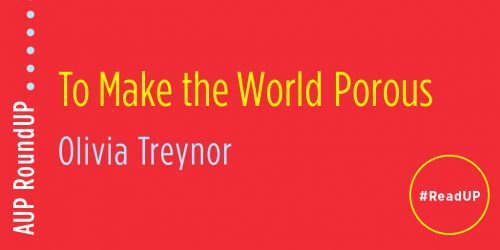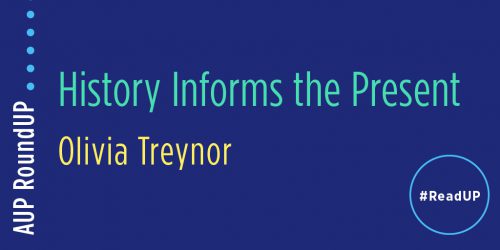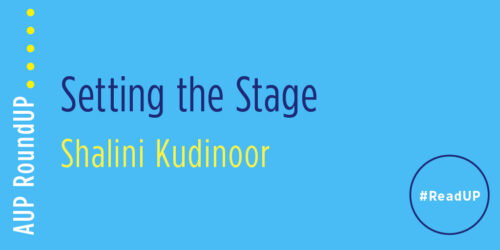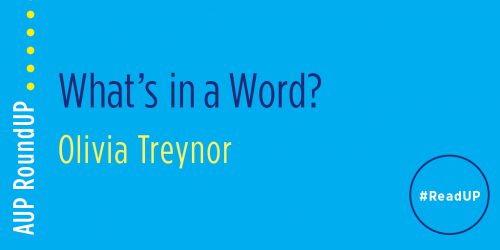Reflections On Adversity: An AUP RoundUP By Olivia Treynor

As I began writing this post around the twentieth anniversary of 9/11, the subject of conflict and recovery from tragedy felt like an urgent subject, especially given that New York and the rest of the world were observing the solemn day amid the ongoing global devastation of COVID-19. Against this backdrop, I wanted to explore what other University Press blogs have been sharing about healing and reflecting after calamity to prepare us for a more just, empathetic, and hopeful future.
ON WAR AND THE SENSORY
An excerpt from Sheer Misery–a part first-person account of, part historic glance back to World War II–was posted to acknowledge the wartime anniversaries that took place during August. In the passage, the sensory is key to accessing the lives of soldiers. As the author, Mary Louise Robert, writes, “To hear an incoming shell, to smell a buddy’s blood, or to eat frozen food for weeks at a time—these miseries have been seen as a ‘given’ of war with no history of their own. Yet sensory meaning does have a history inasmuch as it emerges from a particular context recoverable through first-person accounts.” Indeed, the embodied experience of war is both the most striking and perhaps the most difficult to pay homage to because it is exactly the corporeal nature of it that makes it both so intense and so fleeting. As Louise Roberts writes, “A soldier’s senses were one of the few things he could call his own. Military life challenged a man’s personhood.” I am especially interested in this articulation that senses, in their intimacy to the body that experiences them, are the most profoundly affecting aspects of war. This text suggests to me that it is not so much the historical fact of a tragedy that affects individuals as it is the somatic proximity to the experience.
ON TOPPLING FALSE HISTORIES
Adam H. Domby examines the significance of the contested removal of Robert E. Lee’s statue in Richmond. Taking issue with the argument that the removal of Confederate monuments is an erasure of history, Domby unpacks what such tributes actually signify. He writes, “Monuments seek to silence the voices of those men and women whom Lee enslaved, who recalled him as an especially cruel and harsh oppressor who separated families. The truth about who Lee was as a man (flawed, racist, and loser—at least when it came to the Civil War) is erased by monuments that present him as perfect.” Here, Domby calls our attention to how we can more truthfully and justly grapple with tragedies of the past. This piece underscores that a false, romantic narrative about the past serves no one; to render past vulgarities palatable only diminishes our opportunity to not repeat them.
ON RESURRECTING THE TRUTH
Michelle Kells describes the chapter she wrote for the Latina Leadership anthology, where she calls attention to the overlooked mujerista activism that mobilized a historic strike in New Mexico during the early fifties. Kells writes, “Most of the women’s names were ultimately erased over the past 70 years. My goal was to recover their names and the stories as heuristics of Latina leadership during the Cold War era in America—a climate we find ourselves re-living in many respects today.” Kells’s revealing of the effaced Latina activists from the past reminds me that past atrocities–here, the minimization of Latina leadership–can be reexamined and made more just.
ON HISPANIC HERITAGE, HOPE, AND HARDINESS
I want to close with an acknowledgement that this piece is being published during Hispanic Heritage Month, and, as such, frame this week’s RoundUP within the optimism that this month-long celebration of Latinx cultures calls for. As Beacon Broadside’s commemoration post puts it, “This year’s theme for Hispanic/Latinx Heritage Month is Esperanza: A Celebration of Hispanic Heritage and Hope. It invites Hispanic and Latinx communities to reflect on how good our tomorrow can be by holding onto resilience and hope.” The intersection articulated here, of resilience and hope through reflections on the past–no matter how bleak those histories may be–is what I believe each of these blog posts remind us of.
Until next time.







